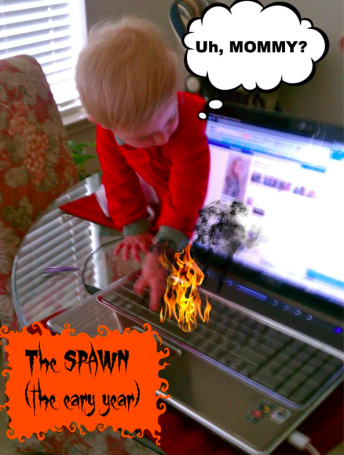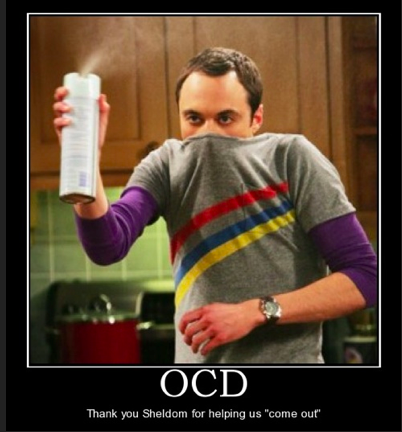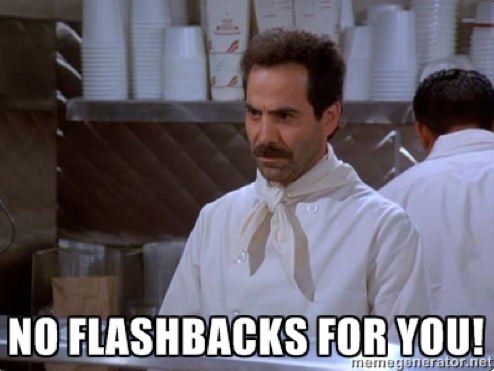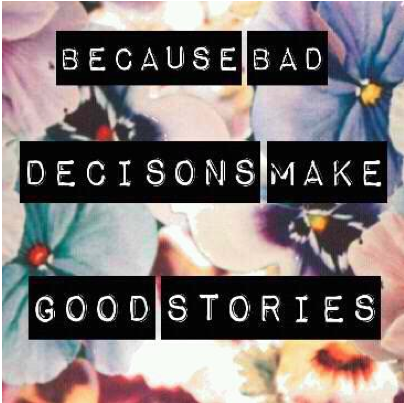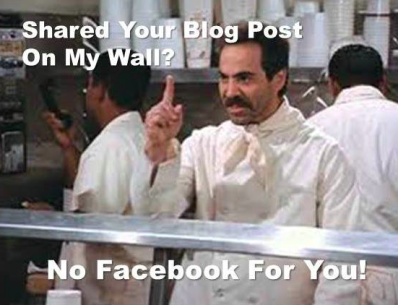Kristen Lamb's Blog, page 62
May 6, 2014
Common Core and Vegan Zombies—Confessions of an ADD Mother

The Spawn loves airplanes. Watching The Blue Angels.
This week I have to go to a parent-teacher meeting regarding The Spawn. They are concerned he is developmentally behind because he’s four and people have a hard time understanding him. His speech isn’t where it “should be.” And this just puts a knot in my skirt.
Now, don’t get me wrong. I want to honestly and lovingly help my son with any challenges he might face, but sometimes I want to scream. We have handed our kids to the bean-counters and academics and the children are the collateral damage.
This Isn’t Our First Rodeo
When The Spawn was two months old, I took him for his first checkup and vaccinations. They wanted to give him and UNGODLY amount of vaccinations at one time and I said no. I wanted to space them out. He weighed only eight pounds and common sense dictated that a tiny body could not take that kind of bombardment.
The pediatrician shopped short of calling me an abusive mother.
Jerk Doctor: Well, the American Medical Association says—
Me: Okay, stop there. Doctors also thought radiation for everything was AWESOME and once recommended X-Raying children’s feet to fit SHOES properly. They prescribed Thalidomide for morning sickness which caused rampant birth defects. Every drug pulled by the FDA has first been approved by the FDA. So logic is not on your side, Buddy, and forgive me if I don’t worship the APA, AMA, FDA because I think that’s a good way to end up DOA.
He loooooved me.
What was particularly interesting was when I took our dog, Pippa, to be vaccinated, she weighed the same. Eight pounds. The veterinarian made me take her in multiple times because a body that small couldn’t take the onslaught of mass vaccinations. I asked if she could be my son’s pediatrician because she had more sense.
Let’s just say I have a history of being THAT Mom.
College Prep for Infants
So a couple weeks ago I hear a commercial for an on-line education system and I’m sure it’s great. But the commercial ticked me off. It’s a mom’s voiceover with touchy-feely music talking about how her son was born with a health issue and spent his first six months of life in a hospital and she was deeply concerned he’d be behind educationally.
Huh?
All right. I am from Texas and maybe I’m a dumb redneck, but what’s a kid learning between birth and 6 months that needs help from a computer learning tool? Maybe The Spawn is defective because I remember chewing on toes and rolling across the living room floor to be the big deal.
I’m a bad mother. I was letting him teethe on picture books instead of refining his understanding of fluid dynamics.
Big Trouble in Little Wedgewood Elementary
I was always in trouble in school. Yes, I see your shock face. I didn’t learn linearly. I had to reverse engineer everything and still do. I have the mind of an engineer or a ferret (jury is still out on that one). I have to pull things apart to understand HOW they work.
My mom was great. She didn’t force me to sit at a desk and do things the way “normal” kids were supposed to, likely because she already knew The Normal Ship sailed without me. She didn’t care if I did my homework hanging like a bat at midnight wearing a tutu so long as it got done and I made good grades. School, on the other hand, was not thrilled with me hanging like a bat in a tutu and this is why all memories of third grade involve me sitting in the hall.
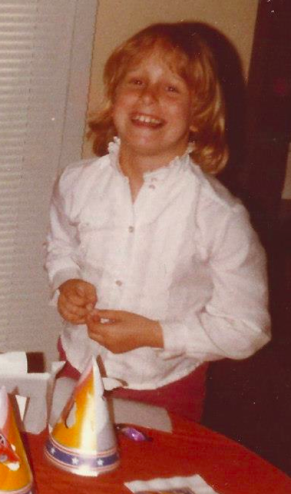
Kristen Circa Third Grade
I made the best grades but was in the most trouble and not a lot has changed.
I think standardized testing is fine…no, sorry I think it’s boneheaded. It has nothing to do with knowledge and only tests one’s ability to take a test. I scored so low on my SAT I think they had to check me for a pulse. I started out in junior college in Moron Math while I tutored Chemistry and Physics for extra money and read books on Chaos Theory for fun.
The “Test” told them what math class I needed and the Oracle Test doesn’t lie.
I dropped out of high school twice. It took me five years to graduate by the skin of my teeth and I am the reason for the current truancy laws. But, in my 20s, I spoke four languages and earned a degree in International Relations with a heavy emphasis on Political Economy of the Middle East and North Africa. I was a killer code-breaker and every branch of the military wanted me in Intelligence. So that whole reverse-engineering I received Fs for in school was apparently very useful after all.
Ironically, this skill is what makes me an excellent teacher.
What is Standard Anyway?
Either let our teachers be teachers and do their jobs and their art (which teaching IS) or just be honest and hand them a white lab coat and a clipboard and be done with it. Reward the kids with a Nutri-Log if they can figure out how the hell Common Core Math works.
And this whole notion that “Your kid is this age and should be doing this” would be fine with me if it weren’t worshipped to the point of stupidity. Yes, we need benchmarks. We need to know areas to focus so we can guide and nurture our wee ones. And maybe The Spawn is verbally behind because he loves solving highly advanced puzzles more than talking. He’s like his parents. More like Shawn cuz I never shut up, but dig puzzles.
Our boy is FOUR. For the love of all that is chocolate, let them be BABIES. Let them be LITTLE. It is such a brief and beautiful time and we are forgetting that.

Bat Spawn and his trusty minion, Lazr Cat. And, no. I have NO idea how he got up there.
They’re kids not copies. No human is identical. We don’t come off an assembly line. Can someone please tell the bureaucrats and scientists that they will never create a single operating manual that will work on all of us.
Michelangelo was dyslexic. DaVinci nearly lost every commission he was given. No one wanted to work with him because he was a NOTORIOUS flake. He’d start a project then see something shiny and disappear for weeks or months. He was SEVERELY ADD and that’s a good thing because we can thank him for his art, his groundbreaking work in anatomy, his early designs of flying machines and SCUBA gear and on and on.
Einstein likely had Asperger’s. Walt Disney was considered slow. Churchill had a speech impediment and was bad at math. Agatha Christie had dysgraphia (an inability to understand written words) yet grew up to profoundly impact an entire genre with her unique writing style.
What if these geniuses had been in our modern school system? I think they’d have been sitting in the hall, too. Maybe the “experts” would have even medicated the genius right out of them so they could grow up to be something soul-sucking…with dental benefits.
No I’m Not Crazy. My Mother Had Me Tested.
I know I might be overreacting. I’m a writer and we can be dramatic, but often I think it’s because so many of us were chastised for being different. We didn’t fit in. We couldn’t be “measured” as accurately as others. Maybe we even were told we were learning disabled. Because my brain works differently than the fat part of the bell curve, I am disabled? Really.
Yes, I wrote a half a million words in less than a year…I also put the mayo away in the microwave.
And The Spawn is SO funny and clever. He made up the death metal song “Zombies and Babies” at age three. Not long ago he started singing “Zombies and Pears.”
Me: Zombies and pears? Zombies eat brains. What kind of zombie eats pears?
Spawn: *matter-of-factly* Vegan Zombies.
And HOW do you argue with that?
What are your thoughts? And feel free to disagree with me, I only ask that any debate be polite. I’m anti-drone so feel free to offer me another POV. It’s how I learn. Maybe there is a perspective I haven’t considered. The Spawn is my first and only boy, so this is new. Any of you have suggestions? Ways I can prepare for this meeting? I am bringing Hubby so he can hold my leash and make sure my muzzle stays on.
Do you think all this college-prep crap’s gone cray-cray? Maybe SAT instruction for pregnant women to put on their bellies?
Are you frustrated that every year they seem to be putting our teachers in a tighter straight-jacket? Are you one of those kids who sat in the hall, too? Hey, we’re Hall Peeps! Any teachers who can offer some help, advice, anecdotes? Do any of you “suffer” from a learning disability? Has your “learning disability” actually been your greatest asset? I know my ADD presents many challenges, but so does being boring.
How have you overcome your disability? And sorry, that last question still ticks me off. WE need to overcome? Maybe “normal” folks should have a moment in our brains and see what they’re missing…SQUIRREL!
Anyway…
To prove it and show my love, for the month of MAY, everyone who leaves a comment I will put your name in a hat. If you comment and link back to my blog on your blog, you get your name in the hat twice. What do you win? The unvarnished truth from yours truly. I will pick a winner once a month and it will be a critique of the first 20 pages of your novel, or your query letter, or your synopsis (5 pages or less).
I will announce April’s winner after waking from the conference coma in a couple days.
If you want more help with plot problems, antagonists, structure, beginnings, then I have a FANTASTIC class coming up to help you!
CLASS COMES WITH HANDOUTS AND FREE RECORDING.
Understanding the Antagonist
If you are struggling with plot or have a book that seems to be in the Never-Ending Hole of Chasing Your Tail or maybe you’d like to learn how to plot a series, I am also teaching my ever-popular Understanding the Antagonist Class on May 10th from NOON to 2:00 P.M. (A SATURDAY). This is a fabulous class for understanding all the different types of antagonists and how to use them to maintain and increase story tension.
Remember, a story is only as strong as its problem ;) . This is a GREAT class for streamlining a story and making it pitch-ready.
Additionally, why pay thousands for an editor or hundreds for a book doctor? This is a VERY affordable way to make sure your entire story is clear and interesting. Also, it will help you learn to plot far faster and cleaner in the future.
Again, use WANA10 for $10 off.
I’ll be running the First Five Pages again at the end of May, so stay tuned.
And, if you need help building a brand, social media platform, please check out my latest best-selling book, Rise of the Machines—Human Authors in a Digital World.


May 5, 2014
21st Century Publishing by the Grace of Gluten-Free Jesus

WANAs at DFWWWCon
I shambled in from DFWWCon dirty, tired, with no voice, out of energy but filled with hope. It’s been such a privilege for me to stick with this job long enough to watch it evolve. I’ve even witnessed WANA grow from an acronym in e-mails from my original editor to whittle down typing OUT my first book title (We Are Not Alone) to a binding movement where writers of all levels refer to themselves as WANAs. All genres, all forms of publishing welcome.
We don’t make you dance with snakes until your third meeting *wink, wink* :D .
WANA has always been about love and service instead of self. I believe WANA is the connective tissue that makes writers stronger in craft and spirit—writers knowing they are stronger together than apart. WANA has always had this wonderful mix of sage pros mingling with bright-eyed newbies.
The pros help the new authors become more grounded and educated in the business or craft. Newbies refresh our spirits. They fill us with the wonder and magic of youth, the vigor that reminds us why we write. I believe we share the same message from different points in a timeline. Keep pressing. Keep going. Keep loving what you do.
We are NOT alone.
Have You Heard of Gluten-Free Jesus?
Okay, I am not meaning to be irreverent but I am living proof God has a sense of humor. I’m from Texas and part of our culture is church (we go shooting after :D ). In other states they might ask where you work, we might inquire where you go to church. Vacation Bible School is a staple of childhood.
We’ve just been through the Easter season and I SO love where we go to church, namely because when we had communion on Maundy Thursday there were two baskets of communion wafers.
So I am standing in line with Hubby. Music’s playing. We are all feeling the love. I lean over to Hubby and whisper, “So do I just ask for the Gluten-Free Body of Christ?” ….and he ribs me and says something about how he can’t take me anywhere which is true so I don’t argue.
Blessed are the Peacemakers
I’d be lying if I didn’t tell you my belief system hasn’t affected how I’ve developed WANA or helped writers. I believe love trumps all. Love of writing will overcome the nagging self-doubt and the legions of people telling us we are fools for trying. Love for each other is what keeps us going when we go through the wilderness, those withering empty times when we start reconsidering Aunt Thelma’s suggestion that medical billing might be a better career choice. WANAs bind together for more than book sales.
We are a family who will love you and be there even when it’s ugly.
But one of the core tenets of WANA has always been we are united by love. Love for each other as human beings and artists. WANA has never taken sides in writing or publishing.
It might have been easier or more sensational for me to blast NY and call for it to be burned to the ground. Conversely, maybe I’d have had more friends in traditional publishing if I labeled all of self-publishing a gaggle of hacks. But, blessedly I have friends I adore and admire in all realms of publishing because authentic love is always balanced with truth. What is the truth?
Stories will live on. Stories are like Mother Nature. We humans could nuke the planet into a shell of itself and I guarantee you something green will poke through a crack in an irradiated parking lot somewhere. Same with writing. The institutions that govern HOW our stories reach those who want to hear them are less important than the art. WANAs are blindly devoted to great stories, not business models.
A Tale of Two Siblings
My POV? Traditional NY publishing is the older child and self-pub/indie is the younger annoying sibling. I’ve loved both and seen the strengths and weaknesses each has offer. If you read my newest book, Rise of the Machines—Human Authors in a Digital World I feel I’m even-handed. I praise and chastise both.
Bluntness is my superpower.
Not all artists are wired for indie. It is BRUTAL. The flip side? Not all artists are wired for traditional. It is BRUTAL.
They call me the WANA Mama and it SO fits. Sometimes I feel like I’m trying to break up two kids fighting.
Traditional: He doesn’t even have a STORY and yet he can publish!
Self-Pub: She is SO full of herself and won’t let me even try!
Me: Knock it off before I hairlip both of you. Trad, let your brother try. He only learns by doing. Selfie, you have to learn the rules before you can break them.
Traditional: But he is publishing a Zombie-Self-Help!!!
Me: Okay, Trad. Selfie might have a point. Texting? Real Housewives of the OC? Selfie, Trad has a point. Don’t come crying to me when no one buys it. Now both of you go play Battleship before I make you pull weeds.
Dear Gluten-Free Jesus, give me strength to love both these kids and not kill them.
DFWWWCon
So the point of all this, other than being able to use the term “Gluten-Free Jesus” is I am finally, after years of playing referee, seeing both kids learn to play together and appreciate each other. Sure, Trad has convinced Selfie that he can jump off the roof using an umbrella because Penguin from Batman does it all the time. And Selfie still reads Trad’s diary and tells the neighborhood all the best dirt. But, all in all? They’re learning to see the GOOD each has to offer. Combine strengths and buffer each other’s weaknesses.
Selfie has taught Trad that social media is NOT a fad, rather a fundamental shift in human communication. He’s made Trad appreciate some newer and ways of doing things *cough e-books* and to remember writing is FUN. Try NEW THINGS. Trad, however, is the older kid and is teaching Selfie that quality can trump quantity. She tells him to listen to his teachers. Appreciate those who’ve gone before and be humble enough to learn something. Not every thought that flits across our brain makes a book others want to BUY.
Thankfully, Optimism is my other superpower. I’d longed for a day where the lines would blur and the kids would play well together. Trad would stop putting Selfie in a chokehold and Selfie would stop feeding the dog the game pieces in order to win.
This conference left me on such a high. I always believed “the kids” would finally see what they had in common. Love. Love for stories and telling those stories and getting them to people who wanted to enjoy those stories. I always believed this new era would weed out people who are in our industry for the wrong reasons.
Agents who loved great books and good writers would innovate and thrive. Publishers who appreciated great books would evolve. Writers in this for more than a get-rich-quick would endure and everyone would have a chance to prove he or she has the right stuff. With the right attitude, this is the best time in human history to be in this business.
It is still a tough industry and not everything is as clean or just as it could be. But, by the grace of Gluten-Free Jesus we’re getting there ;) .
What are your thoughts? Do you see traditional and nontraditional playing nicer, sharing, and learning from each other? Are you excited about the future? That you don’t have to choose which kid you love more?
I will announce April’s winner after waking from the conference coma in a couple days.
If you want more help with plot problems, antagonists, structure, beginnings, then I have a FANTASTIC class coming up to help you!
CLASS COMES WITH HANDOUTS AND FREE RECORDING.
Understanding the Antagonist
If you are struggling with plot or have a book that seems to be in the Never-Ending Hole of Chasing Your Tail or maybe you’d like to learn how to plot a series, I am also teaching my ever-popular Understanding the Antagonist Class on May 10th from NOON to 2:00 P.M. (A SATURDAY). This is a fabulous class for understanding all the different types of antagonists and how to use them to maintain and increase story tension.
Remember, a story is only as strong as its problem ;) . This is a GREAT class for streamlining a story and making it pitch-ready.
Additionally, why pay thousands for an editor or hundreds for a book doctor? This is a VERY affordable way to make sure your entire story is clear and interesting. Also, it will help you learn to plot far faster and cleaner in the future.
Again, use WANA10 for $10 off.
I’ll be running the First Five Pages again at the end of May, so stay tuned.


May 2, 2014
Nothing Says “Forever” Like a Dead Mother-In-Law Solitaire

Original image via Flikr Creative Commons, courtesy of Stephen Durham
Ah, tax season spring! May is crammed with holidays, birthdays and weddings. Hint: Mother’s Day, which is bizarrely close to Cinco de Mayo when even white people drink tequila to celebrate something…um, regarding Mexico. I’ve been running a million miles an hour to prepare for DFWWWCon this weekend and after a week beating up the poor flashbacks, I figured it was time for something fun. And nothing lightens the mood like death :D.
I’ve recently hit 40, which means most of my mail consists of flyers for AARP, discounts on hearing aids and prepaid funerals. Yay. Nothing to make a woman still feel young and sexy like a prepaid FUNERAL.
Anyway…
My family is pretty strange when it comes to the subject of “death.” And not like anyone is, per se, “normal” about death, but my family takes weird clean OFF “The Munster Family Scale” and lands us somewhere into the domain of a cross between Rob Zombie and Monty Python.
“The Zombie-Python Scale”?
Likely, this laissez faire attitude stems from a number of primary causes (beyond the obvious answer “mental illness”). One? Occupational. Mom was a nurse and came from a medical/military family. Dad? All soldiers and farmers.
Yeah, talk about gallows humor.
The second factor? Genetic. I come from Vikings, and science has “proven” there is a genome embedded in our DNA that demands that, upon expiration, our bodies must be placed on a wooden ship in the middle of an All-You-Can-Eat-Buffet, then piled in gold, pushed out on the water and set on fire.
Fire, fire, heh heh. Heh heh. Fire.
Heh.
Sadly, I have yet to find a local government official who will grant me a permit to be set afloat in my cousin Randy’s bass boat into Benbrook Lake then shot with leftover fireworks. Just kidding. Not about the permit, but the leftover fireworks part.
We’re TEXANS and there NO SUCH THING as “leftover fireworks.”
Anyway, when I was in the fifth grade, my teacher died, which really sucked, not just because my teacher died, but that it was the WRONG teacher. MY teacher, Mrs. Emmet, was awesome. The Demonic Embodiment of Science Education I had to spend an hour a day with, however, DID NOT die. I think it was because she was feasting slowly on the souls of fifth-grade children…
…and the guinea pigs near her desk that kept dying under strange circumstances (which were never fully investigated).
No, Demon Teacher lived, and is probably still alive today because she likely possesses a painting that ages in her stead. AWESOME Teacher is the one who had the heart attack (and DEMON Teacher looked strangely younger the next day).
But I digress…
The school, being confused and benevolent, brought in a grief counselor. Though, looking back, I think the grief counselor was the same dude wielding a leaf-blower earlier that school year. Grief Counselor told us to go home and discuss the subject of death with our parents then write a paper.
Great idea.
THANKS. Thank you for scarring me even further for LIFE.
So, I go home and ask my mom how she wants us to handle her passing on. Her answer? Taxidermy. She wanted to be made into something useful, like a lamp. She was even gracious enough to allow my brother and I to share her. I could take Creepy-Mom-Lamp for six months and brother could have her the other six months.
Yeah, right on that, Mom.
My Dad? He wanted to be cremated then his ashes strapped to a rocket and spread in space, an idea which everyone thought was sheer lunacy until Gene Roddenberry made it “cool.”
And I imagine the only reason CPS wasn’t called when I turned in my paper was because it WAS the 1980s. This was back in a time when it was permissible to banish your kids who wouldn’t stop running through KMart to go sit in a 110-degree station wagon and fight over a single Slurpee.
Fast-forward to 1999 and my father passes away. Since NASA and I weren’t exactly close and their security people already knew what I looked like, the rocket idea was out of the question. This meant Dad’s ashes went on a high shelf in my closet until I could make another plan. Then one day, years later, I’m all cleaning out my closet.
WTH is that blue box? I don’t remember putting that….*reaches and box falls*
OH HOLY HELL!
Yes, it was my father. In…my…shoes.
You CAN’T MAKE THIS STUFF UP, PEOPLE!
I had to vacuum up my father, and he’s now laid to rest with cremated flip-slops, cat fur, dust bunnies one of my favorite earrings, and I hope that makes him happy after being a smart@$$ about that “being blown up in space” crap.
And it is now 2014 and Mom is still intent on the whole “taxidermy” idea, though I’ve informed her that I’m going to have her stuffed in the squatting position so she can water my front garden. Strangely, that threat hasn’t bothered her enough to deviate from Taxidermy Funeral Course.
I’m happy I’ve broken the Cycle of Weird, though. My husband is Clean-Cut-Boy-Scout-Air-Force-Military and he wants to be buried in a graveyard with a tombstone where we can go talk to him and bring flowers and chocolate offerings like NORMAL PEOPLE.
Me? I want to be cremated and made into a diamond so my son has a ready-made engagement ring for his beloved. How could a mother-in-law and daughter-in-law be ANY closer? THAT is family (and being frugal—Hey, “waste not, want, not”). It’s also a great excuse to gain some extra weight. A skinny dead mother-in-law is good for little more than a tacky nose ring, which might impress some young Waffle House waitress from the trailer park, but not a gal suitable for MY boy.
But a mom-in-law with some MEAT? I might make a nice 2 carat solitaire. Not large enough to catch a Kardashian gold-digger, but big enough to impress a young lady with more than a G.E.D.
So, yes, I want to be made into a diamond (princess cut, of course), but NOT before my consciousness is uploaded into a microchip and implanted in Hubby’s head…so I can keep annoying him for eternity.
You know, *rolls eyes* NORMAL :D.
Okay, yes maybe I’ve gone off the reservation with this post (not the first or last time), but the whole “made into a gemstone” idea seems better than taking up space in a grave…that is later claimed by imminent domain and then the city builds something super-depressing over you like a Baby Gap.
***This is why all Baby Gaps are haunted, btw. It’s “science.” Don’t argue***
Then there is the made into a tree thing, which is a close second choice, but in Texas? With OUR weather? That’s just DELAYED CREMATION.
What are your thoughts? Well, maybe you don’t want to share those, unless you have some cooler ideas. Not “cooler” ideas, though cryogenics holds promise *rubs chin contemplatively*.
I LOVE hearing from you!
To prove it and show my love, for the month of MAY, everyone who leaves a comment I will put your name in a hat. If you comment and link back to my blog on your blog, you get your name in the hat twice. What do you win? The unvarnished truth from yours truly. I will pick a winner once a month and it will be a critique of the first 20 pages of your novel, or your query letter, or your synopsis (5 pages or less).
I wil announce April’s winner after waking from the conference coma early next week.
If you want more help with plot problems, antagonists, structure, beginnings, then I have a FANTASTIC class coming up to help you!
CLASS COMES WITH HANDOUTS AND FREE RECORDING.
Understanding the Antagonist
If you are struggling with plot or have a book that seems to be in the Never-Ending Hole of Chasing Your Tail or maybe you’d like to learn how to plot a series, I am also teaching my ever-popular Understanding the Antagonist Class on May 10th from NOON to 2:00 P.M. (A SATURDAY). This is a fabulous class for understanding all the different types of antagonists and how to use them to maintain and increase story tension.
Remember, a story is only as strong as its problem ;) . This is a GREAT class for streamlining a story and making it pitch-ready.
Additionally, why pay thousands for an editor or hundreds for a book doctor? This is a VERY affordable way to make sure your entire story is clear and interesting. Also, it will help you learn to plot far faster and cleaner in the future.
Again, use WANA10 for $10 off.
I’ll be running the First Five Pages again at the end of May, so stay tuned.
And, if you need help building a brand, social media platform, please check out my latest best-selling book, Rise of the Machines—Human Authors in a Digital World.


April 30, 2014
Why Too Many Flashbacks Might Be a Warning of Deeper Story Problems

Image vis Flickr Creative Commons, courtesy of Yuya Sekiguchi.
This week we have been discussing flashbacks. What are they? Why do readers, agents, editors generally want to stab them in the face? Is it truly a flashback or is the writer employing an unorthodox plotting structure (The Green Mile or The English Patient)? Shifting time IS a legitimate literary device, but like ALL literary devices, it has strengths and weaknesses.
Theme is wonderful. But if we lay it on too thick, we can turn off readers because our story comes across as preachy or lecturing. Symbolism? Love it! But overdo this and readers can get irritated. Can the drapes JUST BE BLUE? Deus ex machina IS a legitimate literary device. Feel free to use it. I wouldn’t recommend it, but knock yourself out.
As I like to say, Have fun storming the castle! *waves and grins*
Deus ex machina hasn’t been used much since, oh, Odysseus, but hey. It might work. *cough Neverending Story* Anything can work. Don’t let me stop you.
All righty. Today, I’d like to talk about WHY flashbacks can be red flags for me as a teacher/editor. I feel I can speak to this because when I started writing I was CLUELESS. My first novel is being used in GITMO because it is more effective than water boarding.
So, why might too many flashbacks make people like me twitchy?
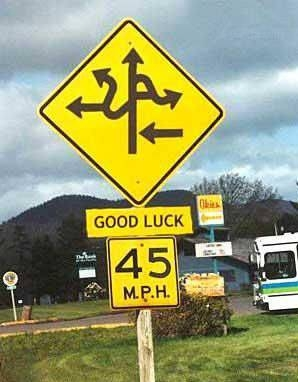
Our WIP can feel a little like THIS…
We Don’t Have a Core Story Problem
Most new writers cannot tell you what their book is about in ONE sentence, yet that is all we should need. Three, MAX, but one is better. I don’t care how complicated or long the work, it should have a simple core.
Lord of the Rings
A naive, sheltered race must leave home for the first time and toss an evil ring in a volcano before darkness destroys their world and all they love.
Simple. Ah, but simple is not always easy. And while Lord of the Rings is EPIC in length, with mind-bending description and layers and symbols and sub-plots and invented languages…the core is simple. Destroy The Ring of Power before Sauron casts the world in darkness and destroys everyone.
Many new writers don’t know how to plot or believe plotting means writing will be formulaic (which us UNTRUE). Or they have no idea how to whittle all the shiny fabulous ideas in their heads and pick ONE. Thus, flashbacks become a way that we explore different stories and ideas, but since there is no skeleton, we have a gelatinous mess only we love or understand.
Whether a pantser (write by the seat of your pants) or a plotter or a mixture of both (me) we need to know what our story is ABOUT.
This is often why, when I challenge writers to write the ending first?
*BOOM! Brain matter all over the walls*
But, if we KNOW our story problem, the ending should be there (or at least AN ending). In the LOTR, we know if they don’t toss the ring in the volcano, they lose. We know the story ends somewhere near….wait for it….a volcano.
Same in literary fiction. In The Joy Luck Club if June Mei isn’t on that boat to China in the end, she has failed to break the cycles of the past. In The Road if Man and Boy resort to snacking on people to reach the ocean, they fail. There is still a goal and there has to be a goal in order to generate true dramatic tension.
Thus, flashbacks are often a way of us trying to figure out what the story is really about. While this is a good exercise, it is a loooong and arduous way to write books.
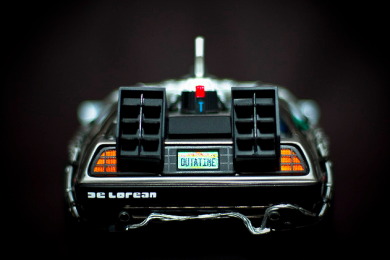
Back to the future, then past then future…
We Don’t Yet Know Our Characters
Often flashbacks (particularly for the new pre-published writer) are a way we use to get to know who we are writing about. Maybe we aren’t comfortable with a character background sheet. It feels too… “Fill in the Blank.” I was that way and still am. This is why, when I do a character background, I write their life stories first. Then I can pick what is salient and have a developed character who is three-dimensional.
We Have Chosen the WRONG Protagonist
Writers are weird ducks, but y’all know that *quack quack*. We have to be ruthless almost to the point of sociopathy, but on the flip side, we must be intimate and vulnerable in a way mere mortals can’t be. In the beginning, being vulnerable is hard. It might always be hard. But for those of you who’ve had a work that had a ton of flashbacks, I’d like to ask this.
Did you begin your work thinking the story was about one character, only to find out you were telling the wrong story? That you’d unwittingly cast the wrong person?

Image via Flickr Creative Commons courtesy of Robert Ellsworth Tyler
When we are new, we are insecure. Mainly because our family might be more supportive if we’d chosen to join a cult. Our protagonist is often US or at least a reflection, and, since we feel insecure, we often end up with a perfect protagonist, which is code for “dull as dirt.” Why? We can’t be vulnerable.
Ah, but supporting characters are different. We don’t have the same armor on with those guys…which is often why people love them more and they often stage a story coup and take over.
We Have Chosen the Wrong Beginning
Sometimes flashbacks occur because our subconscious senses we aren’t starting in the correct place. We have gone too far into the action and our subconscious is dragging us back.
The flip side of this is everything is cause and effect. We sometimes just have to pick a point and start THERE. My first book in the trilogy I’m working on is a good example (and an easy one for the moment).
Romi is broke and without a job because her ex-fiance pulled an ENRON, stole a half a billion dollars, cleaned out all her accounts, and left her the FBI’s prime suspect…even though she IS an innocent victim.
I had to make a choice. Begin the book when she is down and out and blackballed OR start the story when she gets out of college and lands a dream job and dream fiancé (who will both turn into nightmares). Either would have worked. I picked starting after the $#%^ hit the fan.
Just because a set of events made a character a certain way doesn’t mean this information is salient to the plot problem. We all have a background and are all a collection of our experiences. And we could look for causation ad infinitum and go back thousands of years to figure out why. But that makes a LONG book and is therapy not fiction.

Image via Frank Selmo WANA Commons
Emotional Distancing
As I’ve shown in examples over this week, flashbacks can be a symptom that we are doing something right. We ramped up the tension to the point of shredding nerves (GOOD), but then, to ease our own anxiety, we flashed back to explain. Remember great fiction is totally counterintuitive to what normal humans do. Fiction is the path of greatest resistance.
We might be avoiding a storyline or casting a certain character because it hits too close to home.
I did this with my first novel The Past Never Dies (does the title tell you anything?)
In this book I was “attempting” to run two parallel timelines. Vivi was the outgoing world traveler and her friend, Eileen, she left behind was trapped by paralyzing OCD. The friend was living vicariously through gifts and letters and journals (I KNOW. I told y’all I’ve done all this, too).
But what was really fascinating to me was people didn’t care for Vivi (a character I projected as me at the time). She was too perfect and thus a caricature. Eileen, on the other hand, had the far more interesting story.
In the beginning, Eileen is trapped by OCD and a survivor of religious abuse. She grew up with an OLD SCHOOL Pentacostal preacher for a father who hated women, and a mother who’s too browbeaten to fight back. To compound this trauma, she was tormented in school because her father insisted she wear homemade long dresses, no makeup or jewelry and never cut her hair (in the sweltering heat of Florida).
In fact, this is how Vivi and her became friends. Vivi took on the bullies.
I tell that all in many, many….*sigh* many flashbacks.
Eileen has a routine and is borderline Aspergers. Her routine must be as precise as a Swiss watch or she short-circuits. She breaks free of Dad and explores her passion for art. Just as she is opening up, she’s the victim of a cruel and public prank at her workplace.
For the first time, she bolts. Instead of turning inward, she finally blows outward. She burns her paintings and literally walks away from her life in a very Thelma & Louise way. She rebels.
This parallel story (and the one I believed to be lesser of the two stories) arcs from Eileen being repressed, bullied and enslaved to facing those demons and finally experiencing liberation and actualization.
Vivi? A travel brochure and manufactured drama. Every poor family member who read my TOME loved Eileen’s story and was bored to tears by Vivi’s.
Why?
I wanted to be Vivi. I was Eileen. I could be vulnerable with Eileen because, in my mind, I was Vivi not Eileen.
At the time I wrote the book, I was a slave to OCD and had crippling panic attacks and social anxiety. I would shop at three in the morning so I didn’t run into people. I was terrified of the outside world and others…and that is why Eileen was far more authentic and REAL. She was deeply and profoundly flawed yet overcame it.
I have seen this same phenomena time and time and time again with writers I’ve worked with. They will believe wholeheartedly their story is about Such-and-Such, but it is really about a character they “thought” was in the supporting cast.
Summing Up
Can you use flashbacks? Yes. But if we are using too many, ask the hard questions:
1. Do I have a CORE story problem I can articulate in three sentences or less?
2. Do I truly know my characters?
3. Have I chosen the wrong protagonist?
4. Am I starting in the correct spot?
5. Am I failing to choose a certain spot because I fear commitment or failure so I keep digging back in time to avoid moving forward? The past is set, the future not. Ground is given, sky is scary.
6. Am I using the flashback to emotionally distance from a story, an event or even a character?
7. If I am afraid of this thread or this character, is that perhaps the better direction to go?
In the BBT Gold class is we talk, a lot. I am more of a Book Therapist than Doctor. Often writers know the story they yearn to tell. What I do is listen to all the ideas and characters and dramas and say, “I hear all of this, but what I am hearing is your story is really about X.” I don’t have a magic ball, just good listening skills that can peel away a bunch of stuff I’m not attached to (but the writer is).
This class is designed to save a LOT of time, money and fruitless revisions. Everyone walks away with their story on a sentence, a basic plot and a very clear idea of what their novel truly is about.
Six hours or less can save you six years or more :D .
Like couples therapy. You and your WIP. You think it’s about the toothpaste lid being left off alien invasion and her childhood when it isn’t. An outside professional can help you go deeper to what’s at the heart of the matter/story, whether that is me, a good editor, a great critique partner or group.
I hope at the end of these posts you can see why I am not really being mean when I challenge you to lose flashbacks. My goal is for you guys to tell the story you were born to tell, but sometimes we are our own worst enemy.
What are your thoughts?
For those who’ve relied on too many flashbacks, does this help? Maybe you’ve picked the wrong point in time or are scared of your true story? Have you cast the wrong character before? Maybe handed your work to others and they ask, “Why aren’t you writing about HER?” Are you going backward because you fear going forward, or maybe don’t know how to?
I LOVE hearing from you!
To prove it and show my love, for the month of APRIL, everyone who leaves a comment I will put your name in a hat. If you comment and link back to my blog on your blog, you get your name in the hat twice. What do you win? The unvarnished truth from yours truly. I will pick a winner once a month and it will be a critique of the first 20 pages of your novel, or your query letter, or your synopsis (5 pages or less).
If you want more help with plot problems, antagonists, structure, beginnings, then I have a FANTASTIC class coming up to help you!
CLASS COMES WITH HANDOUTS AND FREE RECORDING.
Understanding the Antagonist
If you are struggling with plot or have a book that seems to be in the Never-Ending Hole of Chasing Your Tail or maybe you’d like to learn how to plot a series, I am also teaching my ever-popular Understanding the Antagonist Class on May 10th from NOON to 2:00 P.M. (A SATURDAY). This is a fabulous class for understanding all the different types of antagonists and how to use them to maintain and increase story tension.
Remember, a story is only as strong as its problem ;) . This is a GREAT class for streamlining a story and making it pitch-ready.
Additionally, why pay thousands for an editor or hundreds for a book doctor? This is a VERY affordable way to make sure your entire story is clear and interesting. Also, it will help you learn to plot far faster and cleaner in the future.
Again, use WANA10 for $10 off.
I’ll be running the First Five Pages again at the end of May, so stay tuned.
And, if you need help building a brand, social media platform, please check out my latest best-selling book, Rise of the Machines—Human Authors in a Digital World.


April 29, 2014
Pirate Codes & Writing Rules—When is a Flashback a Literary Device?
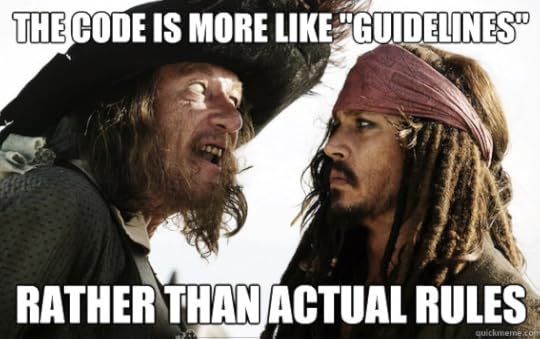
Pirate Code=Writing Rules. Clearer now? :)
Yesterday’s post stirred quite the debate and flurry of panic attacks, so today, we will delve a bit further into Le Mystique of Le Flashback. First of all, for future reference, I need to ignore all Facebook comments that begin with, “I haven’t read your post, but completely disagree…” Er? Ok. Here’s the thing. I play dictator on my blog, because it’s my blog and it’s FUN.
I’m a realist and I KNOW there is some writer out there who has broken every rule there is. But, bringing up every last exception is a confusing way to teach and a fabulous way to make your heads explode.
It’s like the “I before E Except After C (except for when you run a feisty heist on a weird beige foreign neighbor) Rule.”
If I give you guys the BASICS and explain WHY editors, agents and readers almost always dislike flashbacks, you know what is distressing about a flashback so you can avoid the pitfalls if you choose to employ a flashback.
…but still avoid them. Ok, I’ll shut up now.
Defining a Flashback
When is a flashback a literary device? Hint: Rhymes with…NEVER.
Oh, before y’all get your panties in a bunch, let me expound.
One thing that jumped out at me yesterday is that we don’t seem to all define the flashback in the same way. I see this with the term “antagonist” ALL THE TIME, which is why I have an entire class dedicated to un-confusing you. Yes, un-confusing is a word :P.
For instance, many writers use villain and antagonist interchangeably, but they aren’t interchangeable. A villain is only ONE TYPE of many variations of antagonists. Antagonists are not always bad and often they are the protagonist’s allies.
This is like saying an orange is a fruit, thus all fruits are oranges. Logical fallacy.
Flashbacks, to me, are when a writer either breaks a scene and jumps back in time to explain (and thus alleviate tension as in yesterday’s example). OR, a flashback is when another scene serves ONLY to explain another scene (thus again, alleviating present tension).
In the first type, we have a scene, which is action. Protagonist has a goal, but then X happens. The point of the scene is to make the reader wonder if the protagonist will reach the goal or fail. The more roadblocks, the better.
To Flashback to Yesterday’s Post…
In yesterday’s example, we had this GREAT, TENSE scene where a wedding planner is trying (rather unsuccessfully) to herd hungover bridesmaids to the wedding on time. Nothing is going well for the poor planner. WE LOVE IT. We are HOOKED! Yet, with no warning or a clear scene break, suddenly *screeching of tires* we are hurled back into an earlier conversation in a different place and time with totally different people when the bride-to-be decided to move the location from Napa to Mexico.
Huh?
What this did was:
1. Break the forward timeline.
2. Make the reader have to reorient to a new time/goal.
3. Introduced a new cast of characters and dialogue that had to do with a TOTALLY different goal that had nothing to do with herding half-drunk bridesmaids to a chapel on time (and also had me floundering to keep up with 10 names).
The going back in time did nothing for the plot except break the tension by explaining and add a bunch of characters who weren’t even in the present scene. There was no information in that minor flashback that could not have been done BETTER in forward gear.
We know Mom gave in and let the bride have the wedding in Mexico, because…we began the story IN MEXICO!
In fact, putting the flashback real-time actually raises the tension through the roof. Nothing like having Mom wag a finger and say I told you so to make a nervous bride’s hangover improve :P.
Another example.
I’m working on a trilogy. Any book within a series should be able to stand alone. In series, however, it can be very tempting to explain in case someone hasn’t read the earlier book(s). Don’t.
Romi (my protagonist) is shot in the first book. In Book Two, this is page ONE when my protagonist meets with a character from Book One:
“Romi Lachlann,” he said close to my ear then leaned back, studying me. “You look different.”
“I’d hope so.” I absently rubbed the scar on my ribs from the gunshot wound and poured myself a cup of black coffee from a large carafe.
Then, I continue the story. Sally forth!
Romi’s goal is to find out why, after 18 months of silence, someone from her past suddenly needs to see her. Yes, there is this teasing of the past, but I don’t stop and explain who shot her. I don’t lurch back to the final Big Boss Battle in Book One when she is on the floor begging for her life. I let the reader wonder.
Er? Gunshot wound? WTH happened?
If I stop mid-scene to explain, I confuse the reader and dilute the wondering. If I indulge in another scene back from when Romi was shot, I shoot myself in the foot.
Why would anyone 1) bother reading the first book or 2) keep turning pages to figure out what happened and how/why she was shot?
Additionally, my Book Two Romi is so paranoid she’s three steps away from wearing a tin-foil hat. If I go back and tell WHY, the story fizzles. Yet, by revealing details from what happened earlier in real-time (and when relevant to the current story problem), the reader eventually comes to understand the full depth of what Romi survived.
In fact, if I do my job properly, part of what will keep the new reader engaged is finding out what on earth transpired that tipped Romi off the deep end. For those who (hopefully) read Book One, her behavior is just an organic growth of the character/story they already know.
Also, if some people have read the first book, then I’m not trapping myself in an “As You Know, Bob Syndrome” when I withhold information. Why repeat details some readers already know and that would ruin tension for those who don’t yet have answers?
Flashbacks and Parallel Timelines are TWO Different Creatures
Flashbacks disorient, diffuse tension and can be cut without harming the story. All the information in the flashback can be explained in narrative or dialogue at a later point. No need to hit the “Reverse.” Your protagonist’s conflict isn’t in the past, but the present and future. The past has already happened, so readers CAN’T WORRY.
In my book, the reader knows Romi survives being shot. She’s drinking coffee and NOT a ghost. Flashing back to a bunch of pain, suffering, betrayal is self-indulgent melodrama. Her conflict is in the current problem—the large bounty for her head (literally).
A Parallel Timeline is NOT a Flashback

Image via Amy Tan’s, “The Joy Luck Club.”
Just because some scenes are set in an earlier time, doesn’t mean they are flashbacks. If we pull past and present apart then set the scenes side-by-side, we will see they exhibit three-act structure and eventually converge with the present in the final scenes of the story. Some examples are Fried Green Tomatoes, The Joy Luck Club, The Divine Secrets of the Ya-Ya Sisterhood, The Notebook and The Green Mile.
For instance, I love the example of Stephen King’s The Green Mile not only because it is a great story and superb example of what we are discussing, but the book and movie are very close. This movie would be a great study if you are so bold as to try parallel timelines. They are tricky and I am not so brave.
The Green Mile begins in 1999 with Paul Edgecomb in a Louisiana nursing home. Paul begins to cry while watching the movie Top Hat. When his elderly friend Elaine shows concern, he confesses the movie reminded him of his time as a prison guard in charge of the death row inmates at Cold Mountain Penitentiary during the summer of 1935.
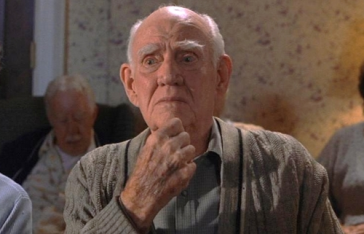
Old Paul Edgecomb.
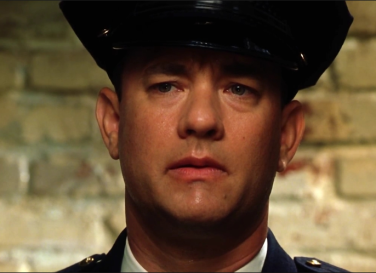
Young Paul Edgecomb.
One timeline follows Young Paul as a prison guard and his miraculous encounter with John Coffee. The other timeline follows Old Paul and his trials in the nursing home. It isn’t until the end that anyone bothers doing the math and sees HOW these two timelines converge. In fact, the timelines converging is essential to the core of the story. What happened to Young Paul has altered Old Paul forever.
Also, note that Young Paul Edgecomb was a jailer who held the power over the powerless, yet used his authority for good. As an elderly man in a home, Paul comes to experience what the inmates in his care might have felt like under the sociopath Percy Wetmore. Old Paul is no longer in a position of power and is at the mercy of a sadistic care giver (a present-day ghost of Percy Wetmore).
Or is he? ;)
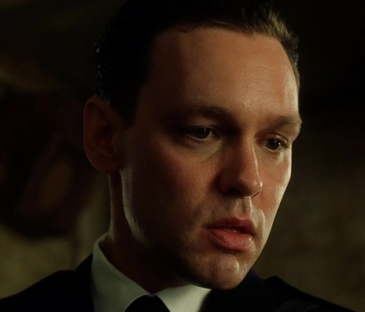
Percy Wetmore in “The Green Mile.”
Not All Story Timelines Have to Be Completely Linear
Some stories will begin with a tragic event in the beginning, then we see something like TWO DAYS EARLIER. This is not a flashback. This is merely a different way of plotting and a solid literary device. Though these types of stories might begin in a future moment, once the timeline goes back, it often stays there. Time then keeps pressing forward until the two points in time meet. There is no back-and-forth psychic whiplash.
Can these rules be broken? Sure. Pulp Fiction.

From the Quentin Tarantino film, “Pulp Fiction.”
But, I might add that Pulp Fiction ticked off as many people as who loved it (and this was a movie and visual so easier on the gray matter). Yet, even in Pulp Fiction (or The English Patient) eventually the jaunty timelines converged for those of us who’d gutted through being tossed all over the place.
***Note: I wanted to set The English Patient ON FIRE….but someone beat me.
But let me point out something interesting. If we snipped the scenes in either of these stories apart, we could set them side-by-side into a completely linear story with no spare parts.
Tomorrow, we will discuss why misused flashbacks can be a symptom of bigger issues/problems. But, I hope this helps you guys understand what I mean when referring to “a flashback” and the difference between a flashback versus parallel or non-linear timelines. Unorthodox plotting can be a literary device that enhances tension. Flashbacks, however, diffuse tension…and this is why they should be killed without pity.
I’m right.
It’s science :P.
What are your thoughts? Unless your thoughts are, but “But Kristen! Rules can be broken! Such-and-Scuh used flashbacks every page and now bathes in diamonds!” I know. And everyone hates her so I hope her money makes her happy. All rules can be broken and broken well.
Other thoughts than that? Did this help you guys see the difference in the “flashback” that irritates readers, editors and agents versus a parallel timeline or non-traditional plot structure?
I LOVE hearing from you!
To prove it and show my love, for the month of APRIL, everyone who leaves a comment I will put your name in a hat. If you comment and link back to my blog on your blog, you get your name in the hat twice. What do you win? The unvarnished truth from yours truly. I will pick a winner once a month and it will be a critique of the first 20 pages of your novel, or your query letter, or your synopsis (5 pages or less).
If you want more help with plot problems, antagonists, structure, beginnings, then I have a FANTASTIC class coming up to help you!
CLASS COMES WITH HANDOUTS AND FREE RECORDING.
Understanding the Antagonist
If you are struggling with plot or have a book that seems to be in the Never-Ending Hole of Chasing Your Tail or maybe you’d like to learn how to plot a series, I am also teaching my ever-popular Understanding the Antagonist Class on May 10th from NOON to 2:00 P.M. (A SATURDAY). This is a fabulous class for understanding all the different types of antagonists and how to use them to maintain and increase story tension.
Remember, a story is only as strong as its problem ;) . This is a GREAT class for streamlining a story and making it pitch-ready.
Additionally, why pay thousands for an editor or hundreds for a book doctor? This is a VERY affordable way to make sure your entire story is clear and interesting. Also, it will help you learn to plot far faster and cleaner in the future.
Again, use WANA10 for $10 off.
I’ll be running the First Five Pages again at the end of May, so stay tuned.
And, if you need help building a brand, social media platform, please check out my latest best-selling book, Rise of the Machines—Human Authors in a Digital World.


April 28, 2014
The Hidden EVIL of Flashbacks
So you want to be a writer. Okay. I’ll be blunt because that’s my superpower. Check your conscience at the door keyboard. Writers are not civilized humans. In fact, we are the opposite. We are the reptilian brain to the power of a million. We probe and prod and poke the weak places. Great storytellers are nothing short of sadists. We take a perfectly empathetic/likable person, toss their life in a Vita-Mix and blend, churning that mixture from Level 1-1000.
That is called conflict.
Stories are about people with problems to be solved. Everything else is a travel brochure.
One of the reasons I LOVE teaching craft is I get to see the work/stories of other writers. Recently, I held my First Five Pages class and could hear the collective groans when I said, “NO FLASHBACKS. EVER.” But I am a benevolent dictator and instructed those submitting pages, that if they believed they positively-absolutely-must-have the flashback and had no idea how to extract it? Send it anyway.
I was really happy I did, because I noticed something I’d never before been able to articulate. Sure, flashbacks make the writing jaunty. We get going forward and then we (readers) have to reorient to a new timeline, then to another. But, there was a hidden evil lurking that I’d never so clearly spotted until I received a SUPERB sample from one of my students. Her writing was AWESOME…and that was the problem.
HOOK
If you read my earlier post, I talked about how to hook readers. It doesn’t have to be a bomb, a car chase, a murder. In fact, some of the best tension is in the everyday and it is even more intense because regular people can relate. Most of us can’t relate to a bomb ticking down but two words—Family Reunion. One word—WEDDING.
This writer’s story began with a poor wedding planner trying to herd badly hungover bridesmaids to a wedding (in Mexico). She is trying to repair dresses, cater to a prima donna maid of honor, and placate a bride who is passive and used to others walking over her.
Between trying to get enough outlets in a hundred-year-old church, bridesmaids barfing on their shoes, and a meddling mother of the bride, we have the perfect STEW of DRAMA and a FANTASTIC HOOK! Perfect understanding of in medias res.
We feel compassion for the poor wedding planner and worry if she will get these sick-half-drunk girls to the wedding without using a stun-gun on someone.
I was RIVETED…and then the author went back and explained how the wedding came to be held in Mexico.
ER????
NO, I WANT TO SEE A BRIDESMAID PUKE IN THE FLOWER ARRANGEMENTS!
This sample of writing was fantastic, but she did two things that undermined her piece.
NOTHING Should Work

Image via Flickr Creative Commons, courtesy of Juha-Matti Herrala.
When the wedding planner gives the bridesmaids Pepto, it makes them feel better. Okay, I will go with that. But to enhance this? It makes them feel better…moments before at least one of them (or ALL of them) barfs pink all over the wedding planner’s bag, or the bride’s veil, or the bouquet. Now, the problem isn’t only the sickly maids and bride, but how the heck can the wedding planner get out of THIS?
Character is demonstrated by solving (or not solving) problems. Since wedding planner is the protagonist, maybe she has been through this before and just as the bride is about to have a breakdown because her veil is ruined? Wedding planner pulls out a spare. She always orders two after that wedding she put together in Oklahoma where the chain-smoking bride set fire to her own veil (showing she is calm and resourceful).
Whatever.
So when you put your characters in any scenario, ask, “Can I make it WORSE?” Then make it worse. Then ask that question again and again until you can’t make it worse without making it weird (I.e. sudden alien abduction in a Women’s Fiction).
Part of becoming a writer is to train out any human sensitivity. When we make life easier on our characters, we are doing it because WE feel tension and are seeking to alleviate that. Ah, but TENSION is the fuel of fiction, so do the opposite of what civilized humans would do and MAKE IT WORSE.
Flashback Fizzle
I could tell this writer was doing a SUPERB job of winding our nerves tighter than a Hollywood facelift. How? She backed off to explain…
How many of you have jerk friends, family or acquaintances? Or all of the above? Or maybe you’ve had a moment where you’ve shown your butt? I have all of the above. What do we do to ease others? To make them relax?
We explain.
Sorry about my Mom. She’s not been the same since my father died.
Ok, so we leave out the part that Dad died 15 years ago. It works. It makes others give grace to Mom for acting like a horse’s behind.
I apologize for blowing up like that. I had a flat tire, migraine, no sleep, allergy medicine overdose, etc.
EXPLAINING is what civilized humans do to break the tension. STOP IT! CUT! CUT! CUT!

Original image via Flickr Commons courtesy of Mark Coggins
All of us will feel a NEED to explain why a character is moody, angry, broken, bawdy, whatever. DON’T. Resist the urge to EXPLAIN. In fact, if readers don’t know WHY, they will want to turn pages to find out WHY.
Frankly, as writers, we are GOD, so we really don’t have to explain ourselves anyway. Let the readers suffer until the very end, when you finally allow resolution. Suffering good for readers (and book sales).
***And, like anything, I am sure someone somewhere used a flashback and it was AWESOME. Like any writing “rule” we can break this one, too. But, we have to know the rules to break the rules ;) .***
Flashback Fodder in Real-Time Adds Mystery
When this writer flashed back to explain how the wedding ended up in Mexico instead of Mom’s choice (Napa Valley), she inadvertently missed two opportunities:
1) Increase tension.
2) Show character.
If she’d had this flashback real-time, Mom could have come in, seen the sea foam green bridesmaids (faces and dresses matching) and thrown a fit. “THIS is why I wanted to have this in Napa. It’s Montezuma’s Revenge. I told you wine country was a better choice. Why don’t you ever listen to me?”
The poor bride, who never stands up for herself is defeated and losing ground on what should be HER day. Wedding planner can come to the rescue and usher Mom out with the skill of an ambassador in a war zone (or try and fail). Either way, we LIKE her for trying.
THIS is “Show don’t tell.” Having critical information from a flashback in the current thread of time allows readers to see people act and react. It makes us wonder. It makes us tense. We want to ease the pressure and the only way to do that is to KEEP READING and HOPE it will eventually all turn out for the better.
Now y’all know why I take away your flashbacks. I am being mean, but it’s good for you. Flashbacks will ease your nerves, but is it worth losing the reader? And we often don’t recognize we are doing this. Even I have to go back through my writing and hunt for places I backed off the throttle because I was uncomfortable.
What are your thoughts? What makes you tense? Do you find you fall in love with your characters and go too easy on them?
I LOVE hearing from you!
To prove it and show my love, for the month of APRIL, everyone who leaves a comment I will put your name in a hat. If you comment and link back to my blog on your blog, you get your name in the hat twice. What do you win? The unvarnished truth from yours truly. I will pick a winner once a month and it will be a critique of the first 20 pages of your novel, or your query letter, or your synopsis (5 pages or less).
If you want more help with plot problems, antagonists, structure, beginnings, then I have a FANTASTIC class coming up to help you!
CLASS COMES WITH HANDOUTS AND FREE RECORDING.
Understanding the Antagonist
If you are struggling with plot or have a book that seems to be in the Never-Ending Hole of Chasing Your Tail or maybe you’d like to learn how to plot a series, I am also teaching my ever-popular Understanding the Antagonist Class on May 10th from NOON to 2:00 P.M. (A SATURDAY). This is a fabulous class for understanding all the different types of antagonists and how to use them to maintain and increase story tension.
Remember, a story is only as strong as its problem ;) . This is a GREAT class for streamlining a story and making it pitch-ready.
Additionally, why pay thousands for an editor or hundreds for a book doctor? This is a VERY affordable way to make sure your entire story is clear and interesting. Also, it will help you learn to plot far faster and cleaner in the future.
Again, use WANA10 for $10 off.
I’ll be running the First Five Pages again at the end of May, so stay tuned.
And, if you need help building a brand, social media platform, please check out my latest best-selling book, Rise of the Machines—Human Authors in a Digital World.


April 25, 2014
The Single Best Way to Sell Books (Or Lose a Sale)

Image via Flickr Creative Commons. Bansky’s “Peaceful hearts Doctor” courtesy of Eva Blue.
We can blog, tweet, promo, purchase ads and wave pom poms over our book and that is all lovely. Attention is grand. An on-line platform is essential. But, if none of these efforts translate into an actual sale? A lot of time and money wasted. What is the best way to sell books?
We’ll get there in a sec… *suspenseful music queues*
In my latest book, Rise of the Machines–Human Authors in a Digital World I actually spend a lot of time explaining why advertising and marketing doesn’t sell books in the new paradigm (or any other, for that matter) and what changes to make for any advertising or marketing to be more effective. Yet, ads, banners, book trailers aside, people want to read a great book.
This means our best way of selling books is…
You ready for this? *drum roll*
Writing great books.
Our sample pages, which are the beginning of the book, are our most priceless selling tool. This is why I’ve dedicated just as many (if not more) blog posts to teaching craft than I have teaching social media. Social media is not magic and it will work far better with a great product (book). Whouda thunk?
I know most of you’ve heard agents and editors usually give a book one to three pages, before continuing or chunking into the circular file. You might be thinking one to three pages? But, my story really gets going on page 21.
No.
I’ve run the first-twenty-pages-contest on this blog for about four years. Most of the samples I get? I don’t need 20 pages. I need one. Maybe five. At the outset? TEN (but that’s rare). I already know all the writer’s good and bad habits as well as the writer’s level of education and skill (or lack thereof). It’s simply shocking how many of the same problems plague the beginning of most first-time novels.
And it’s easy to think this is all very unfair, but think of your own experiences browsing a bookstore. Aside from cover and interesting title and story description, what do we do? We open the book and scan the first couple of pages. If those first pages stink or are lackluster, we don’t give the writer twenty of fifty or a hundred pages to sell us.
Unless you wrote Girl With the Dragon Tattoo but he was dead.
So when you are dead, I suppose people give more gratis, because I cannot count the number of times people have said, “Well, yes GWTDT bored the paint off the walls, but after the first hundred pages, it’s awesome!”
I…am not that motivated. I gave the book more than it’s due (because the writer was dead) and gave it 20. Next! I’m aging here.
So if you are reading this blog and you’re dead? You get more leeway. Also, what’s it like on the Other Side? Feel free to leave a description in the comments :D.
For the rest of us who remain among the living? One to five pages.
I can tell 99% of what’s wrong in a book by page five, and so can agents and editors (and readers, though they might not know what is wrong, only they aren’t hooked).
It’s sort of like going to a doctor. He/She can tell from the sphygmomanometer (been DYING to use that word) which is a blood-pressure cuff, a look at skin pallor and basic symptoms to tell if a patient has a bum ticker. No need to crack open the patient’s chest and stare right at the sickly beating heart.

Image via Flickr Creative Commons, courtesy of the U.S. Navy.
Most new writers (especially) have what Candy Haven’s calls a fish-head. What do we do with fish-heads? We cut them off and throw them away, unless you are my family, who are scavengers Scandinavians and then they make soup *shivers*. This actually explains the Girl with the Dragon Tattoo mystery.
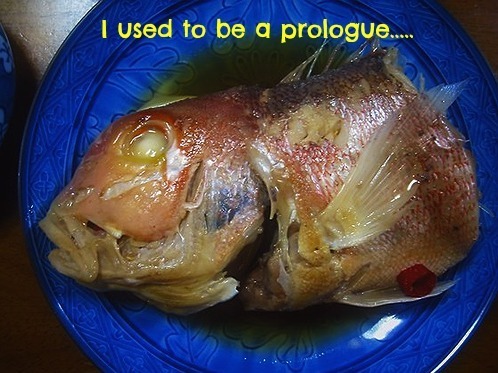
Original image via Flickr Creative Commons, courtesy of David Pursehouse
The writer was dead and Swedish. Apparently Swedish readers looove fish-head-story-soup and somehow convinced others to give it a try. Not saying these are bad books, btw. Clearly, they have a huge fan base and rave reviews. I’m just I am not patient enough to get to the good stuff (and neither are a lot of other people).
Most new novels need to lose the first hundred pages. But that’s just something I’ve gleaned from experience. Yet, who cares about the first hundred if we can’t care about the first five? Often, the problems in the next 95 pages can be fixed by knowing what went sideways with the first five. Seriously.
Sample pages are…samples. If we go to Sam’s or Costco, how many will stop for a sample of egg rolls, pizza, or Acai juice? If the sample Green Juice Gut-Blaster tastes like steel wool mixed with moldy spinach, will you BUY the mega-bottle of Green Juice Gut-Blaster hoping it tastes better by mid-bottle?
My point, exactly.
For a fantastic resource about this, I highly recommend (AGAIN) Les Edgerton’s Hooked. Also, tonight is my First Five Pages Class to help you out (deets down the page), because we all know that the TOUGHEST part of writing a book is the BEGINNING….then the middle and WHOA—crap—the end. But, this class is for the first FIVE because if we can’t nab a reader there? The rest is moot.
What makes you stop reading a book? How long do you give books? Are you patient enough to wait a hundred pages for it to get interesting? What do you find the hardest about writing the beginning of the book? Have you lopped off your own fish heads?
I LOVE hearing from you!
To prove it and show my love, for the month of APRIL, everyone who leaves a comment I will put your name in a hat. If you comment and link back to my blog on your blog, you get your name in the hat twice. What do you win? The unvarnished truth from yours truly. I will pick a winner once a month and it will be a critique of the first 20 pages of your novel, or your query letter, or your synopsis (5 pages or less).
If you want more help with plot problems, antagonists, structure, beginnings, then I have TWO classes coming up to help you!
Upcoming Classes
BOTH CLASSES COME WITH HANDOUTS AND FREE RECORDING.
A seasoned editor can tell a lot about your book with only five pages. Learn to hook hard and hook early. TONIGHT!!! I am running the Your First Five Pages Class. Use WANA10 for $10 off. This is the perfect class for diagnosing bigger story issues or even getting a work agent-ready in time for conference season. This class is April 25th 6:00-8:30 PM NYC Time. Gold Level is available if you want me to critique your 5 pages.
Also, if you are struggling with plot or have a book that seems to be in the Never-Ending Hole of Chasing Your Tail or maybe you’d like to learn how to plot a series, I am also teaching my ever-popular Understanding the Antagonist Class on May 10th from NOON to 2:00 P.M. (A SATURDAY). This is a fabulous class for understanding all the different types of antagonists and how to use them to maintain and increase story tension. Remember, a story is only as strong as its problem ;) . This is a GREAT class for streamlining a story and making it pitch-ready.
Again, use WANA10 for $10 off.


April 24, 2014
Everybody Arcs! How to Use Emotional Growth to Propel the Story and Capture the Reader

Because the Scarletts of the world get THINGS DONE….
I’ve heard people say some books (or genres) are plot-driven and others are character-driven. My POV? This is a fallacy. All good books are character-driven and plot is what makes that possible. Characters have to make us give a hoot about the plot. If we don’t like or empathize with the characters, we don’t care about their problems.
Conversely, plot is the delivery mechanism and crucible for character (even in literary fiction). Characters can only be as strong as the opposition they face. Weak problems=weak characters. In a nutshell, character and plot can’t be easily separated.
For instance, in the Pulitzer-Winning The Road, the plot is simple. Man and Boy must make it to the ocean. Yet, since this piece is literary, the plot goal is subordinate to character goal.
It is less important that Man and Boy make it to the ocean than how they make it to the ocean. The world has been obliterated, killing every living thing other than humans. Many have returned to the animal state, resorting to cannibalism to survive. The question in The Road is less “Will they make it to the ocean?” and more “How will they make it to the ocean?” If they resort to snacking on people, they fail.
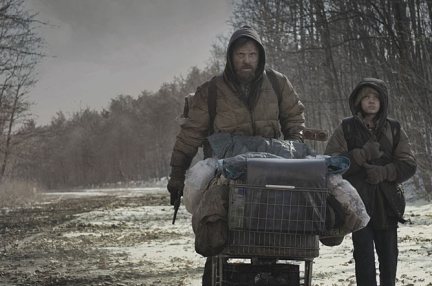
The Road
But I will say that while plot is great, characters are what (who) we remember. We have to be able to empathize. We want to love them, hate them, root for them and watch them fail, then overcome that failure. As the late Blake Snyder said, “Everybody arcs!”
Often, this is the trick with series and why early books generally are more popular. Once our main character evolves, we are left with three choices:
1) Have plot create a new flaw in the protagonist.
2) Peel back another flaw that was already there, but hidden by a more visible flaw.
3) Protagonist can serve as a static character who drives growth in other characters.
Whether we are writing a standalone or a series, character growth is pivotal to good writing. I believe one of the reasons humans are a story people is that we fear change. Often, we see our own flaws and have NO IDEA how to correct them, how to get unstuck. We can feel defeated. Yet, through narrative, we watch protagonists become heroes and, unlike life, there’s full resolution. We can see some slice of ourselves in stories and it helps us change or at least maintain hope that change is possible.
Tools
I highly, highly recommend Angela Ackerman and Becca Puglisi’s Negative Trait Thesaurus and Positive Trait Thesaurus (and add in The Emotion Thesaurus to assist in execution). These books are awesome at helping us see how characters should grow organically. What I love about these books is Angela and Becca show positives of the negatives and negatives of the positives.
For instance, a flaky character can be annoying, unreliable and unpredictable. BUT since this character is unpredictable, she can be very useful because she’s unconventional. She can add comic relief (Phoebe Buffet from Friends) or even tension (Riggs from Lethal Weapon).
Both thesauri show behaviors, attitudes and examples which can make writing life MUCH easier. The Emotion Thesaurus gives us ways to show not tell to express these traits and keeps us from beating up the same descriptions (hearts hammering, hearts beating, hearts thumping, etc.)
How I Use These FABULOUS TOOLS
There is no one right way to write a book. What I did was read a lot of methods, tried them, took what worked and what didn’t and then cobbled my own. But here’s a peek into MY process and the process I encourage students to begin with.
Since I’m writing a trilogy, I needed to look at who my character was in Book One. In Book One, Romi is very loyal and innocent which is ultimately what lands her in trouble. She blindly trusts because she sees only the good in others and ignores or writes off red flags. By the end of Book One, she’s been through a MAJOR crucible and crawled through hell. To survive the Big Boss Battle, she has to kill or be killed. The person she has to kill is a person she cares about and trusted.
My pitch for Book One is Legally Blonde meets Killing Floor.
And my protagonist is a person who, at the beginning of the story, couldn’t step on a bug let alone take a human life. This final action changes her irreparably and damages her innocence.
So, in Book One, my protagonist evolves from Green Pea Pollyanna to Hero Willing to Do What It Takes to Do the Right Thing.
Ah, but doing the right thing has a price. In Book Two, I can’t have her be the same person as Book One or she isn’t believable. Book Two, she’s flipped to the other side of the loyal-trusting-innocent coin and is two steps away from wearing a tin foil hat. Now she questions everything and can never relax. Everybody lies, is her motto. She no longer talks to just anyone, questions everything and is controlling and isolated (but for very good and sympathetic reasons).
Yet, let’s glance at The Positive Trait Thesaurus and I’ll shorten for brevity’s sake.
Book One: Romi Lachlann
Positive: Innocent characters are pure and trusting. They take people at face value and want to believe the good. Easy characters to like and protect.
Negative: In their determination to only see the good, innocent characters may not view the world and other people as they really are, which puts them at a disadvantage.
When we look at this character’s personality, plotting becomes easier. We can also clearly see her Achilles Heel. She needs to be betrayed by someone she trusts blindly and be able to act in a way that is completely contrary to her nature. Also, by knowing who she is (in the beginning) it’s simpler to see who to cast as the antagonist and even allies. She needs allies who challenge her willingness to swallow whatever story she’s fed and help her toughen up.
The core antagonist has to be someone she never sees coming.
When we glance at The Negative Trait Thesaurus, we see that the dark side of Innocent is Childish.
Positive: Innocent and naive. Like children, they are teachable and adapt quickly.
We can use this positive attribute for the protagonist when we look at the proposed solution in The Negative Trait Thesaurus.
Overcoming The Trait as a Major Flaw: A character can defeat his immaturity by growing up. For some, this will mean encountering trials that force them to mature in a short period of time. Other characters will have to face past demons that are keeping them enslaved in this childish state.
This gives me guideposts as to what Book One must accomplish. Romi is tossed head-first into BIG TROUBLE and most of that trouble involves facing a past she believed she left behind when she ran away from home. The story problem forces her to go back to the place she vowed she’d never return.
I could leave my first novel alone. It’s complete. All books (even in a series) should be able to stand alone.
Romi arcs from innocent and blindly trusting person to a determined fighter. But, I wanted the challenge of trying a trilogy, so I have to repeat the process all over again. What is the opposite of Innocent? Resourceful. What is the dark side of resourceful? Paranoid.
And thus I repeat the process. Who is she in the beginning? Who do I need her to grow to be by the end? She can’t live in a hole hiding and terrified of dying. Something has to push her past her fears to face that she’s regressed into an unhealthy existence. Something has to make her rise above her fear and restore her faith.
There will be residue of that innocent-loyal person, but it now has a hardened shell as a defense mechanism. The “thing” that lures her out of hiding is likely tethered to her core nature. Being uber-paranoid isn’t who she truly is. It’s a coping mechanism, a protection.
Remember, in the beginning, I said one plot problem can create a new character problem. Like cogs in a wheel these arcs propel narrative and drive growth and change.
Also, remember that no character is only ONE of these attributes. Strong characters are a unique blending or we end up with caricatures. An innocent character can also be loyal and funny (Elle Woods in Legally Blonde) or they can be isolated and fearful (Edward Scissorhands).
Favorite Story Example
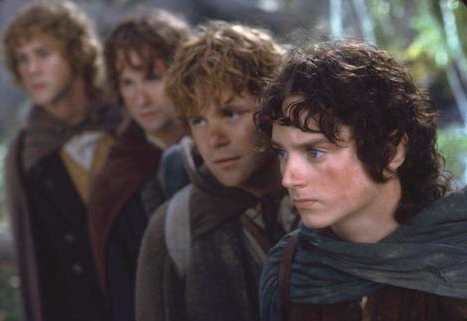
The Lord of the Rings
I love Lord of the Rings probably more than is healthy. I loved the arc of the Hobbits. Sauron never saw Hobbits as particularly useful (they didn’t get a ring) and he never perceived them as any sort of threat. Yet, it is their innocence that becomes Sauron’s ultimate undoing.
Unlike the other races, Hobbits are not as susceptible to the Ring of Power’s sway because of their innocence and inherent goodness. But, in the first book (or movie) their naiveté nearly gets them and all their allies killed.
***Um, cooking bacon on a mountain while EVIL DEAD KINGS are chasing them and trying to KILL them?
The Hobbits must toughen up and lose some of that innocence…but not all of it. If they lose all of it, the Ring of Power will never be destroyed and Sauron wins. Yet, my favorite scene in all cinematic history (which makes me cry EVERY time) is the end of Return of the King. We see the once childlike Hobbits around a pub table, silent, sharing a drink and we see what they sacrificed to not only save the world, but preserve the inherent goodness of their people.
While the other Hobbits dance and laugh and drink in the background, these warriors are quiet and somber. They likely have PTSD and are trying to recapture what they’ve lost, but can never regain. They will never again see the world as they did before that first day leaving The Shire. It is tragic and beautiful all in the span of a few moments.
I hope this gives you some new ideas of how to create dimensional characters. When we know who our characters are (protagonists and antagonists) and where we need them to be/grow, plotting is far simpler.
What are your thoughts? Have you used these books? Maybe used them in a different way? What are some of your favorite character arcs? Do you dislike super-perfect characters?
To prove it and show my love, for the month of APRIL, everyone who leaves a comment I will put your name in a hat. If you comment and link back to my blog on your blog, you get your name in the hat twice. What do you win? The unvarnished truth from yours truly. I will pick a winner once a month and it will be a critique of the first 20 pages of your novel, or your query letter, or your synopsis (5 pages or less).
If you want more help with plot problems, antagonists, structure, beginnings, then I have TWO classes coming up to help you!
Upcoming Classes
BOTH CLASSES COME WITH HANDOUTS AND FREE RECORDING.
A seasoned editor can tell a lot about your book with only five pages. Learn to hook hard and hook early. I am running the Your First Five Pages Class. Use WANA10 for $10 off. This is the perfect class for diagnosing bigger story issues or even getting a work agent-ready in time for conference season. This class is April 25th 6:00-8:30 PM NYC Time. Gold Level is available if you want me to critique your 5 pages.
Also, if you are struggling with plot or have a book that seems to be in the Never-Ending Hole of Chasing Your Tail or maybe you’d like to learn how to plot a series, I am also teaching my ever-popular Understanding the Antagonist Class on May 10th from NOON to 2:00 P.M. (A SATURDAY). This is a fabulous class for understanding all the different types of antagonists and how to use them to maintain and increase story tension. Remember, a story is only as strong as its problem ;) . Again, use WANA10 for $10 off.


April 23, 2014
Starting the Story “In the Action”—Understanding “In Medias Res”

Image via Flickr Creative Commons, via Stupid.Photos
Last week I gave FIVE editor tips to help you guys know if you needed revision. One of the most CONFUSING mistakes (in my POV) is the notion of “Starting with too much action.” I know all of us have heard the “Start in the action” “You have to HOOK” and so we devise car chases, bombs, funerals, etc. in hopes that we will engage a reader.
Before we start, I will add a caveat. Genre might affect the first pages of your novel. In a thriller, mystery, mystery-thriller or suspense, it is common to begin with a body or a terrible act.
In The DaVinci Code, we begin with a horrible murder in an art museum.
BUT, this scene is often NOT a scene with the protagonist. When it comes to the protagonist, we need to begin in what is called in medias res.
The first scene with the protagonist in The DaVinci Code involves the hero at a lecture, which is interrupted by a problem.
Protag’s Goal: Complete lecture, sign some books and maybe have a nice dinner in Paris and go to bed early.
Antag’s Goal: Drop everything and come check out this crime scene. We need your expertise and you don’t have an option of declining.
Note the scene antagonist is not a bad guy but his agenda trumps what the protagonist wants.
The Trouble with In Medias Res
In medias res quite literally means “in the middle of things.” This is a literary tactic that has been used since the days of Odysseus. It is a tactic that forces the writer forward, to begin the story near the heart of the problem.
Ah, but this is where we writers can get in trouble. I see writers beginning their novels with high-action gun battles, blowing up buildings, a heart-wrenching, gut-twisting scene in a hospital or at a funeral, all in an effort to “hook the reader” by “starting in the middle of the action.” Then when they get dinged/rejected by an agent or editor, they are confused.
But I started right in the action! What is more “in the action” than a high-speed chase through Monte Carlo as a bomb ticks down to the final seconds?
Bear with me a few moments, and I will explain why this is melodrama and not in medias res.
Commercial Fiction Ain’t A Tale of Two Cities
For many centuries, there was a literary tendency to begin “in the early years” leading up to the story problem. Authors would wax on rhapsotic about the setting and spend 10,000 words or more “setting up” the story. The reader was privy to “why such and such character” became a whatever. There was a lot of heavy character development and explaining the why of things.
This, of course was fine, because in the 18th century, no writer was competing with television, movies or Facebook.
Thus, if a book was a thousand pages long, it just meant it must have been extra-awesome. Also, authors, back in the day, were often paid by the word, thus there was a lot of incentive to add extra fluff and detail, layer on the subplots and pad the manuscript more than a Freshman term paper. Writing lean hit the author in the piggy bank, so most authors lived by the motto, No adverb left behind.
Then Hemingway came on the scene and…well, let’s get back to my point.
In medias res was not employed by many early novelists. They started the book when the protagonist was in the womb (being facetious here) and their stories often took on epic proportions.
Modern writers can’t do this. Yes there are exceptions to every rule, so save the e-mails. Just trust me when I say that modern readers have been spoiled by Hollywood and iPhones. They are used to instant gratification, and most modern readers will not give us writers 15,000 words to get the the point.
These days, especially when readers are deluged with choices, our sample pages are more vital then ever. We need to get right into the heart of the action from the get-go. But if “the heart of the action” doesn’t involve a gun battle, funeral or cliffhanging scene, what the heck does it look like?
Example from Life
In medias res is the front gate of Six Flags over Texas.
Do we need to start in the years that Kristen was too young to go to Six Flags? How she would see her teenage cousins leave for a day of roller coasters and cry herself to sleep in her toddler bed for not getting to ride the roller coasters? How she vowed at four that she, too, would one day brave The Shock Wave?
Uh…no.
Do we start the story on the biggest loop of the roller coaster? The screams and terror mixed with glee?
No, that’s too far in. If we start the story on a Big Loop (HUGE ACTION–like car chases, bank heists, etc.) then we risk the rest of the book being anti-climactic. If we blow up a building in scene one, do we later blow up two? Three?
So where do we begin?
We begin at the gates of Six Flags over Texas.
We see young Kristen in the back of the station wagon and as her parents pull into the giant parking lot. We are present when she catches a glimpse of the Shock Wave (story problem) in the distance. Wow, it is bigger than she thought. We walk with Kristen through the line to get into the amusement park, and get a chance to know her and care about her before she makes the decision to ignore the Tea Cups and take on the roller coaster (Rise to Adventure).
Kristen could have totally chickened out and stayed on the baby rides, but that would have been a boring story. Yet, because the Tea Cups are in the context of the larger ride, it means something when she decides she MUST ride the roller coaster.
In medias res means we start as close to the overall story problem as possible.
Beginning With Action
This term “action” is often misunderstood, so I hope I can clear it up. There are two components to fiction, the scene and the sequel. The scene is simple. Our character has a GOAL, then someone stands in the way of that goal (antagonist) and there is a setback (or a victory). Most often there will be setbacks because setbacks ratchet tension. The protagonist needs to be one step forward, ten steps back.
The sequel is the processing of some event/setback that just occurred. This is where our character can do some thinking, emotional processing or even discussing with others.
What new writers often do is they begin the book with the sequel, yet a sequel can only come as a result of a scene.
Scenes are action. The character is wanting, needing, doing something. This is a place where we as readers can empathize with the character and connect with the protagonist and begin to root for him or her.
For instance, Les Edgerton is a pal of mine and his book Hooked is the bible of beginnings. He was kind enough to look at the first chapter of my novel and…he SLAYED ME. But, the cool part about Les is he teaches WHY he kills what he kills.
Now, I thought I got into my “action” quickly. I began with my character, Romi, cooking half to death in a parking lot. She’s dreading the Unemployment Office. She is funny, self-deprecating and we do feel sorry for her.
Les chopped off ALL OF IT.
Though only about three pages, Les told me that I began my story in the wrong spot. He chastised me and told me that, while my writing was hysterical, it had to GO.
My actual story began when Romi pushes through the door to the Unemployment Office and realizes Angry Bird (what she’s named a dreadful bureaucrat who treats her like dirt) is working that day. She wants a job. She wants an ally, someone who will help and not judge her. What she gets is a roadblock.
We feel sympathy for her. Most of us know how badly it sucks to look for a job, and that the Unemployment Office is humbling and even humiliating. This is a small event, but one that pulls the reader to the side of my protagonist. Within five pages, she meets another setback.
She finds out she has been blackballed because she was engaged to a man who pulled an ENRON and stole over a half a billion dollars then vanished (and also wiped out all her bank accounts leaving her so broke she can’t even afford to eat).
She’s given a challenge. “Find your ex. Find the money or you will never work anywhere that doesn’t involve a toilet brush and being paid in cash.”
Thus, I hope you can see how the initial setback isn’t massive. It isn’t a funeral or a car crash. It’s gutting it through the front doors of the Unemployment Office and dealing with someone who is supposed to help, but who is sarcastic, rude and a tad cruel. The scene gives us time to empathize, yet it is interminably linked to the major story problem.
Protagonist’s Goal: Get a job before being evicted.
Antagonist’s Goal: Keep her from finding work to starve her into finding missing money.
When Romi enters the Unempolyment Office, she is hopeful this day will be different. She will find a job. She leaves ten steps back. Not only is she unable to find a job, but she never will and has no clue where the missing money is or even where to begin looking. She’s out of money and is out of options. She has to fall back to the ONE place she vowed she’d never return…home with her crazy trailer trash family who resents her for leaving home to go to college.
Also note, (again) that the antagonist isn’t necessarily evil. His father was one of the investors fleeced out of millions. He believes Romi knows where the money is, and he’s using what sway he has for “justice.” Problem is, Romi really is innocent.
I hope this has helped you guys understand what makes a great hook. Begin with a problem (scene), not THINKING (sequel). The problem doesn’t need to be earth-shattering, and if it is, make sure it’s something you can outdo later. Don’t have the biggest loop of your roller coaster at the front of the ride or everything else will be anticlimactic.
What are your thoughts? Any lightbulbs? Did this technique confuse you guys as much as it did me?
To prove it and show my love, for the month of APRIL, everyone who leaves a comment I will put your name in a hat. If you comment and link back to my blog on your blog, you get your name in the hat twice. What do you win? The unvarnished truth from yours truly. I will pick a winner once a month and it will be a critique of the first 20 pages of your novel, or your query letter, or your synopsis (5 pages or less).
If you want more help with plot problems, antagonists, structure, beginnings, then I have TWO classes coming up to help you!
Upcoming Classes
BOTH CLASSES COME WITH HANDOUTS AND FREE RECORDING.
A seasoned editor can tell a lot about your book with only five pages. Learn to hook hard and hook early. I am running the Your First Five Pages Class. Use WANA10 for $10 off. This is the perfect class for diagnosing bigger story issues or even getting a work agent-ready in time for conference season. This class is April 25th 6:00-8:30 PM NYC Time. Gold Level is available if you want me to critique your 5 pages.
Also, if you are struggling with plot or have a book that seems to be in the Never-Ending Hole of Chasing Your Tail or maybe you’d like to learn how to plot a series, I am also teaching my ever-popular Understanding the Antagonist Class on May 10th from NOON to 2:00 P.M. (A SATURDAY). This is a fabulous class for understanding all the different types of antagonists and how to use them to maintain and increase story tension. Remember, a story is only as strong as its problem ;) . Again, use WANA10 for $10 off.


April 21, 2014
The Burst of the Social Media Bubble, Rise of the Indie Author & Why Coffee is to Blame
(Original image courtesy of Matthew Pearce via Flikr Creative Commons.)
Many of you are old enough to remember the dot.com boom (then bust) of the 1990s. The Internet was growing in popularity. More people were owning PCs and commerce was shifting on-line. The Old Guard yelled “WITCHCRAFT!”, threw holy water and shorted out their keyboards. The New Guard dived in with the enthusiasm of a kid at Chuck E. Cheese hopped up on sugar.
Creativity abounded. What products or services could be offered on-line? How could we improve the on-line experience? How could we make purchasing faster, safer, more appealing?
Early Adopters jumped all over this because that’s what Early Adopters do. Hey, someone had to be the first to eat an oyster, right?
The Early Adopter Instigator
Most revolutions begin with other revolutions that set the stage. Case in point. For centuries, water was unsafe—okay deadly—to drink. Most workers actually brought beer to work (or some other fermented drink). Then Western society took a fancy to this new beverage from Asia called TEA and then later COFFEE from South America. When tea and coffee (um CAFFEINE) replaced alcohol as the beverage of choice, workers were more productive.

Image courtesy of Ryu1chia Miwa via Flickr Creative Commons
I was skeptical too, so I tested beer then coffee to make sure the empirical data was sound. When I began my workday with beer? Much more napping and looking up exes on-line. A double Starbucks espresso improved word count.
Joking aside, three major developments 1) the invention of the clock/watch 2) the standardization of time and 3) the shift from alcoholic beverages to caffeinated ones laid the foundation for the Industrial Revolution.
The eight-hour workday was easier to implement once people understood what the heck “an hour” was. Also, laborers were able to focus better and be far more productive when sober.
Science :D .
Fast-Forward—How Coffee Transformed the Publishing Paradigm
Coffee not only fueled the Industrial Revolution, but apparently staying up all night unable to sleep led to the invention of the “computer,” “the Internet,” and later “iTunes.” The shift from “going to a physical store” commerce to more “e-commerce” set the stage for a number of unanticipated revolutions in the arts. If we think about it, when did the mega-bookstore enjoy its Golden Years?
Hint: Right about the time of the movie You’ve Got Mail, clearly marking the brief historical epoch when we actually enjoyed getting e-mails.
In the 90s, the retailer was still king (and the Internet a novelty). Thus, the biggest store with the most bells and whistles and coffee shops won. Why? For centuries we’d been conditioned to going to a physical space to shop. Only the Early Adopters were thumping their legs at this notion of buying stuff without having to drive anywhere.
Granted, this was also the time when SUVs the size of a small semi were all the rage and gas was roughly $1.25 a gallon. Most of us were uncomfortable with the hoo-doo-voo-doo of electric lighting automobiles on-line shopping and still preferred to GO somewhere to buy what we wanted/needed.
Yet, despite initial skepticism, the tsunami of technological innovation decimated many types of businesses, some that had been asking to be smacked for a LONG time. Technology gave beating to the Old School phone companies (cell phones) and wiped out record stores (iTunes) and then later obliterated video stores.
Frankly, Blockbuster had it coming with those ridiculous late fees. Every time I see a Red Box I smile and think of the time Blockbuster refused to work with me on $128 in late fees. Apparently spending four days in the hospital was no excuse for not turning my movies in on time.
Jerks.
The Bursting of the Dot.Com Bubble
Of course, the problem was enthusiasm often has this way of trumping business sense. Once the dot.com fire caught light, everyone was a dot.com and many were nothing more than paper dragons with no business plan, no capital and frankly no idea what the heck they were doing.
We enjoyed a boom and then saw a BOOM. Dot.coms that had their act together became the vanguards for a new age of commerce and the digital wheat was separated from the virtual chaff.
In the wake of the Digital Tsunami, many industries crumbled. In my POV, the music industry is the only one that had a valid excuse not to reinvent. But, after Tower Records toppled, Kodak had time to rework their business model and yet didn’t—People will always want film!—which is why we now will talk of Kodak to our kids the way we talk about cassette tapes and Pet Rocks.
Viva la Revolution
We had to have the Alcoholic Beverage vs. Coffee Revolution to gain a viable and productive Industrial Revolution.
****Rumor has it that writers were equally divided Alcohol/Coffee Debate.
Then, we had to have affordable PCs and a viable Internet to have the On-Line Shopping vs. Retail Space Revolution in order to gain digital commerce. Once digital commerce shifted from Early Adopters to the Early then Late Majority, we witnessed yet even more revolutions spark to life, revolutions that had no way of happening until that particular time in history.
All started by coffee. See the cool stuff you learn here?
Many of these upheavals completely altered the business landscape, and the creative industries saw MAJOR shifts. Indie Bands, Indie Movies and yes, Indie Authors.
Word on the street is that Indie Authors are being supported by an underground resistance financed by Starbucks.
The Social Media Bubble
In roughly 2003-2004 I saw what a major game-changer social media would be for authors. Up until that point, only non-fiction authors had any practical way of building a platform before a book was finished. Novelists had to write a lot of books (and make it past NYC gatekeepers) to have a platform because books were the only way of having a platform/brand.
But with social media? Different story.
Of course when I pitched this idea of branding through social media to agents as late as 2008, they laughed in my face and called me a witch.
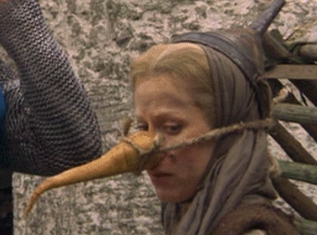
I just said we needed both good books and social media.
Alcohol vs. Coffee —> Industrial Revolution —> Internet —> Commerce Revolution/ Dot. Com Boom —> Tower Records Collapses —> Kodak Collapses —> iPad and Nook released —> Amazon gains publishing influence —> Early Adopters defect to go Indie —> Social Media Boom —> Indie Authors start seeing success —> Borders closes and Barnes & Noble starts bleeding out—> Big Six becomes Nifty Five —> Author Boom
Three components were critical to the success of the Indie Publishing Revolution:
1) Creation of the Product
Ten years ago, this was a pipe dream. Five years ago, self-published books looked self-published. They were also far more expensive and complicated to produce. Technology and the market has transformed this. Authors can now create a book that looks as good as anything purchased from the last remaining B&N in your city (without going broke).
2) Distribution
So long as major retailers had the upper hand, authors were limited in sales. As e-readers shifted from the Early Adopters to the Early and Late Majority (my GRANDFATHER having a Kindle), retailers lost their monopoly.
3) Visibility
Social media helped authors build a brand and platform that could drive book sales even as traditional retailers began to vanish. Social media BOOMED.

For those who want a paper copy to hold…
Social media experts came out of the woodwork to assist writers. It seemed that just about the time a social media site was AWESOME, it collapsed, so we did need guides to help.
Has the Social Media Bubble Burst? What Does This Mean for Authors?
My opinion is we’re seeing a bubble burst that looks a lot like what happened to the dot.coms. Social media has reached an asymptote (not many “drastically new” features to add). Unless Facebook does something EPICALLY STUPID, it will probably remain. Same with Twitter. Fad frenzy has normalized and this new way of interacting has integrated into our culture.
Yes, new sites will emerge, but the rules of the game will stay the same. Since it is social media, those who are authentic, offer value, and are good at creating community will do well. Algorithmic alchemy doesn’t work as well as it used to and never worked long-term.
The handful of writers who adopted social media early did reap rewards. Why? Most other authors didn’t want to go there. This limited competition and gave the Early Adopter Authors an advantage. Most people were on Facebook, yet many authors were NOT.
Then, authors saw the success of the Early Adopter Authors and many a social media guru promised get-rich-quick programs….thus flooding every social site with book spam and bad 20th century marketing retreads. Experts terrified and bedazzled authors with tech-speak and marketing plans.
Yet, in the end, technology is the means not the ends, and society has fundamentally shifted yet again. As I’ve said before, “If we wanted to buy more stuff, we’d be on the Home Shopping Network, not the social network.”
Social media has become such a staple in modern culture we’re finally establishing concrete etiquette for using it. Kinda like, the “Don’t call people before 8:00 a.m. or after 9:00 p.m.” probably didn’t come about the instant the telephone was invented.
Yes, there were “rules” we knew intuitively, but it took a couple years of poor behavior for us to say, “ENOUGH. I’ve had four direct messages from you on Twitter thanking me for the follow and asking for me to buy a book….UNFOLLOW.”
Pop! Goes the Bubble
Is social media essential for author success? Of course it is. Just because a gazillion dot.coms went under doesn’t mean on-line shopping isn’t bigger than ever. As with any revolution, it takes a lot of people jumping in with new ideas to sort the stinkers from the stickers. Buying books on-line? YAY! Grocery shopping on-line? Eh.
We still want to squeeze the Charmin tomatoes.
What I love about the new paradigm is it will test our motivations. Those writing for the wrong reasons (getting RICH) will probably burn out and grumble away. But those of us writing because we LOVE writing will keep pressing, keep working, keep connecting, and trying new things. We will be the new generation of authors no matter the path we choose—traditional or non-traditional.
Social media training will be less about technology and more how to become expert connectors and community-builders, which is what my latest book Rise of the Machines-Human Authors in a Digital World teaches how to do. So long as people buy on-line, social media (and doing it WELL) will remain a key component to success.
But creating relationships has always been a solid business practice. Maybe buy them a coffee ;) .
I love hearing from you!
What are your thoughts? Did you underestimate the power of coffee to change the world? Do you think social media has normalized like on-line commerce? Do you think regular people are becoming more aware of an existing etiquette? Are you less permissive of “rude” behavior you might have forgiven three years ago?
To prove it and show my love, for the month of APRIL, everyone who leaves a comment I will put your name in a hat. If you comment and link back to my blog on your blog, you get your name in the hat twice. What do you win? The unvarnished truth from yours truly. I will pick a winner once a month and it will be a critique of the first 20 pages of your novel, or your query letter, or your synopsis (5 pages or less).
Upcoming Classes
BOTH CLASSES COME WITH HANDOUTS AND FREE RECORDING.
A seasoned editor can tell a lot about your book with only five pages. Learn to hook hard and hook early. I am running the Your First Five Pages Class. Use WANA10 for $10 off. This is the perfect class for diagnosing bigger story issues or even getting a work agent-ready in time for conference season. This class is April 25th 6:00-8:30 PM NYC Time. Gold Level is available if you want me to critique your 5 pages.
Also, if you are struggling with plot or have a book that seems to be in the Never-Ending Hole of Chasing Your Tail or maybe you’d like to learn how to plot a series, I am also teaching my ever-popular Understanding the Antagonist Class on May 10th from NOON to 2:00 P.M. (A SATURDAY). This is a fabulous class for understanding all the different types of antagonists and how to use them to maintain and increase story tension. Remember, a story is only as strong as its problem ;) . Again, use WANA10 for $10 off.



